As many of you head into the city for a holiday visit, I would encourage you to make a stop at the Metropolitan Museum to see two exceptional exhibits. Last month I was part of a small group of editors, writers and designers, assembled by Patrick Frey, to privately tour Interwoven Globe with curator Melinda Watt. What a revelation. Not only is the show a visual feast but a fascinating interdisciplinary lesson in the cross cultural exchange of art and ideas across continents from the Age of Discovery to the 19th century.
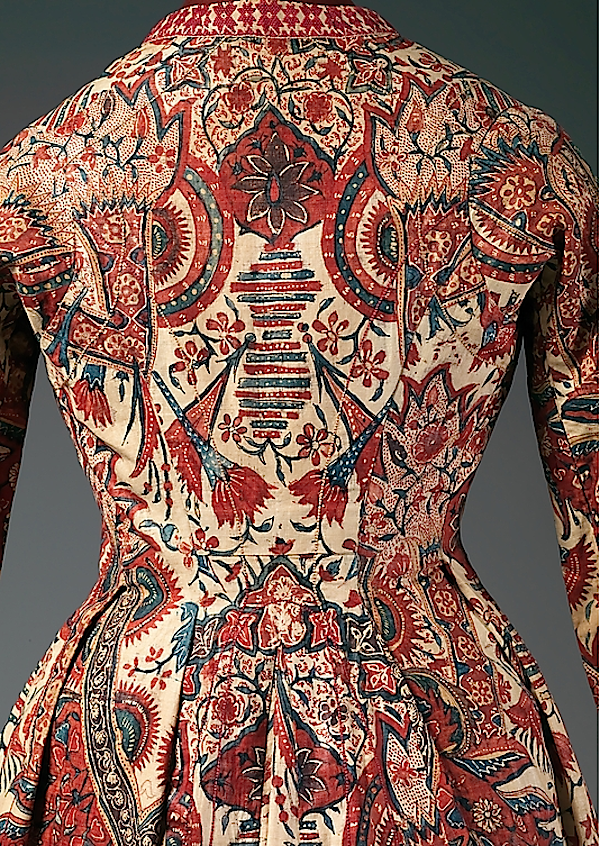 Never before have textiles been the focus of an international history of design and yet they are instrumental in making crucial connections between commerce and the development of the first truly global style. Because of the visual nature of textiles, so much can be gleaned about society, politics, culture and art from the subject matter, styles, and materials. It’s like a gigantic circular puzzle.
Never before have textiles been the focus of an international history of design and yet they are instrumental in making crucial connections between commerce and the development of the first truly global style. Because of the visual nature of textiles, so much can be gleaned about society, politics, culture and art from the subject matter, styles, and materials. It’s like a gigantic circular puzzle.
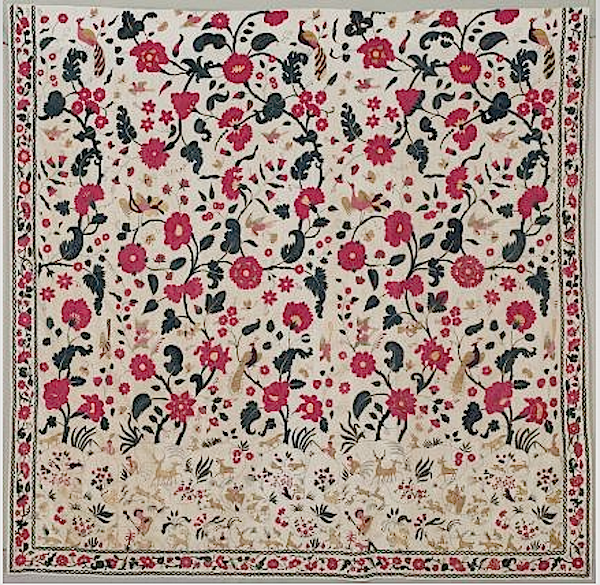 Years in the making, the show makes great use of the museum’s own holdings – 100 of the 134 pieces are from the Met’s collection, many of which have never been seen. Because of the cross-cultural and interdisciplinary nature of the objects, it was previously a challenge to place them in a single department. But as the point of the exhibit is to connect the dots between fashion, textiles, technology, history and design, it presented the perfect opportunity to use them to tell this amazing story. The Indian embroidered curtain above, once hanging in Ashburnham Place in Sussex, England includes elements of Chinese, European and Anglo-Indian cultures, offering concrete evidence for the “correspondence between European designs and the products of Indian cotton painting and embroidery workshops..”
Years in the making, the show makes great use of the museum’s own holdings – 100 of the 134 pieces are from the Met’s collection, many of which have never been seen. Because of the cross-cultural and interdisciplinary nature of the objects, it was previously a challenge to place them in a single department. But as the point of the exhibit is to connect the dots between fashion, textiles, technology, history and design, it presented the perfect opportunity to use them to tell this amazing story. The Indian embroidered curtain above, once hanging in Ashburnham Place in Sussex, England includes elements of Chinese, European and Anglo-Indian cultures, offering concrete evidence for the “correspondence between European designs and the products of Indian cotton painting and embroidery workshops..”
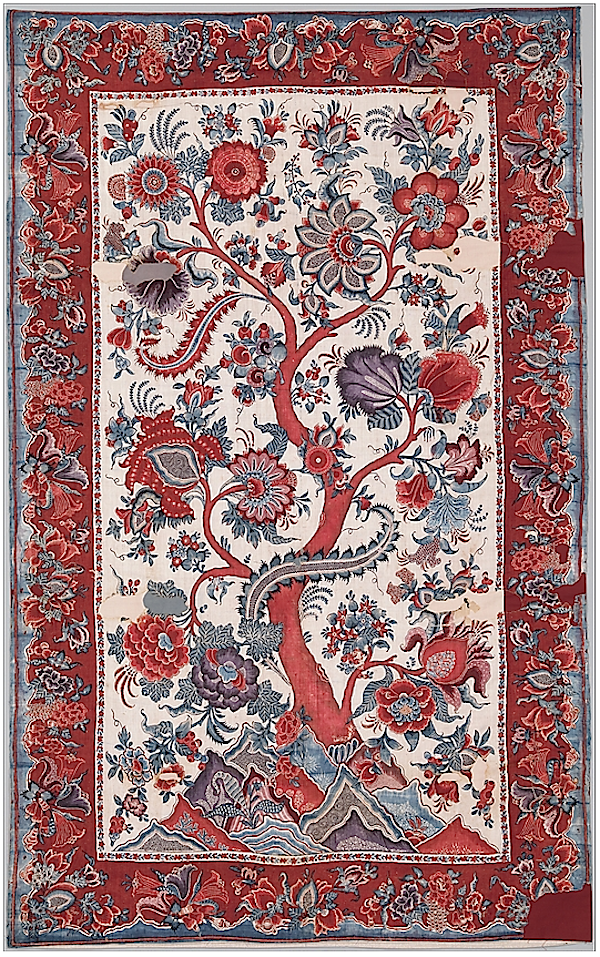 One of the most interesting stories is that of the Indian painted cottons, what we call chintz today. The Indian cotton painters were very skilled at making products for export markets, some as early as the 14th century. The Europeans who first went to the East were there to trade for spices but realized that in many places they were trading with mostly non-monetary economies. They quickly came to realize that Indian textiles were highly desired commodities in many of the cultures. So they commissioned and traded them in huge quantities and started to bring them back, mostly as curiosities, using them in their homes, along with other exotic products. The British, along with the Portuguese, Dutch and French started to commission specific imagery. The recognizable Palampore, above, represented the grandest type of Indian textile that was introduced to Europe in the latter part of the 17th century.
One of the most interesting stories is that of the Indian painted cottons, what we call chintz today. The Indian cotton painters were very skilled at making products for export markets, some as early as the 14th century. The Europeans who first went to the East were there to trade for spices but realized that in many places they were trading with mostly non-monetary economies. They quickly came to realize that Indian textiles were highly desired commodities in many of the cultures. So they commissioned and traded them in huge quantities and started to bring them back, mostly as curiosities, using them in their homes, along with other exotic products. The British, along with the Portuguese, Dutch and French started to commission specific imagery. The recognizable Palampore, above, represented the grandest type of Indian textile that was introduced to Europe in the latter part of the 17th century.
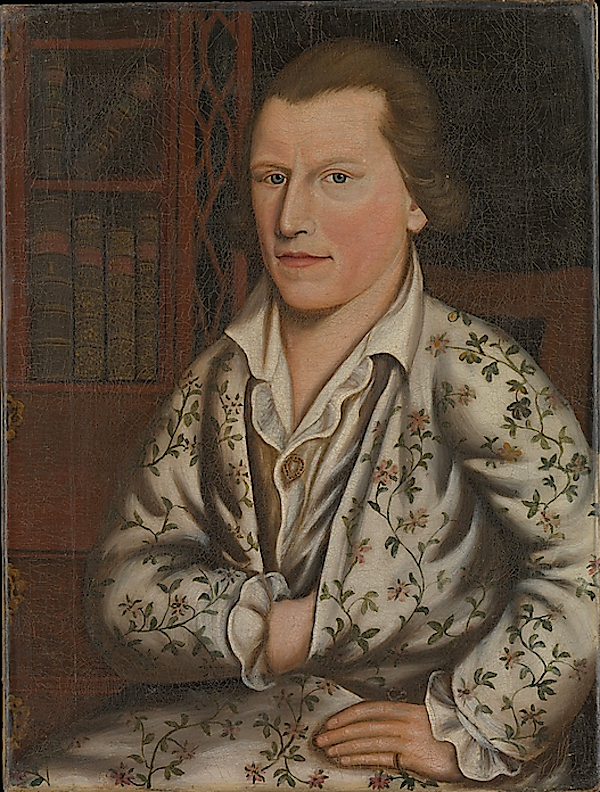 The ramification, in England for example, of this readily available fabric, was that everyone, from kitchen maids to fashionable young men, was wearing chintz. And that was upsetting to many people who were used to being able to identify class structure by apparel. The idea that people of lower means were wearing the same garments as those of the upper class was disturbing. It was the inchoate stages of the democratization of taste and fashion as people were now able to have beautiful clothing that wasn’t precious silk.
The ramification, in England for example, of this readily available fabric, was that everyone, from kitchen maids to fashionable young men, was wearing chintz. And that was upsetting to many people who were used to being able to identify class structure by apparel. The idea that people of lower means were wearing the same garments as those of the upper class was disturbing. It was the inchoate stages of the democratization of taste and fashion as people were now able to have beautiful clothing that wasn’t precious silk.
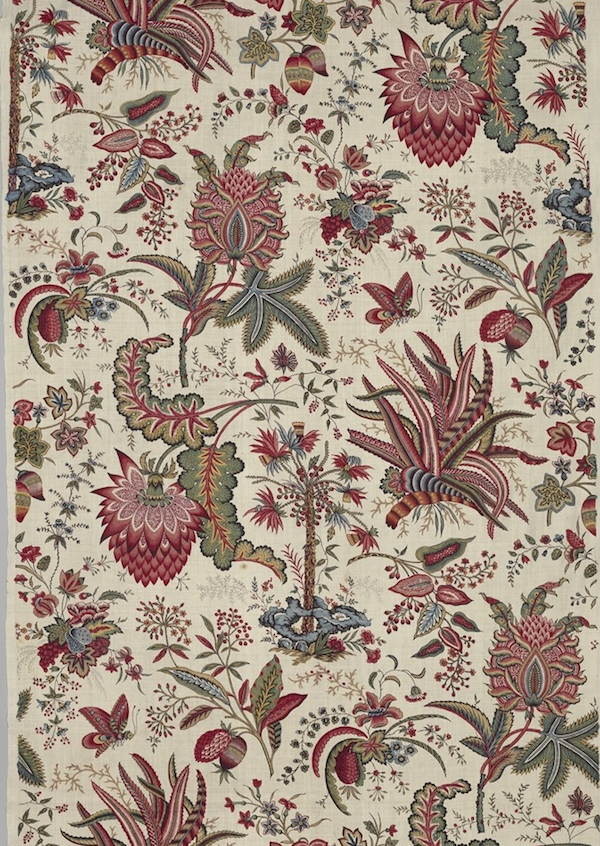 Pierre Frey’s connection to the exhibit is of course through Braquenié, originally Oberkampf, which became one of the most successful textile manufacturers in 18th century Europe. Based on the Indian imports, the Fleurs Tropicales et Palmiers palampore floral above, was probably printed on Indian fabric, as the French could not yet produce the same quality cotton as made in India and Oberkampf was very particular about every step of the process. Marie Antoinette, a huge fan of Indian cotton chintzes, used them exclusively for much of the Petit Trianon – some from India and many printed for her by Oberkampf. When the revolution came, everything was destroyed. About ten years ago, during the restoration of the building, they remembered that the Queen wrote to her mother in Vienna daily. So traveled there, researched the letters and found her notations about the Indian designs she wanted for the Petit Trianon. They then approached Pierre Frey and Braquenié to choose appropriate fabrics such as the one featured above to be included in the renovation. These fabrics are just as coveted and relevant today as they were centuries ago, as the fascination for an exotic global style has never waned.
Pierre Frey’s connection to the exhibit is of course through Braquenié, originally Oberkampf, which became one of the most successful textile manufacturers in 18th century Europe. Based on the Indian imports, the Fleurs Tropicales et Palmiers palampore floral above, was probably printed on Indian fabric, as the French could not yet produce the same quality cotton as made in India and Oberkampf was very particular about every step of the process. Marie Antoinette, a huge fan of Indian cotton chintzes, used them exclusively for much of the Petit Trianon – some from India and many printed for her by Oberkampf. When the revolution came, everything was destroyed. About ten years ago, during the restoration of the building, they remembered that the Queen wrote to her mother in Vienna daily. So traveled there, researched the letters and found her notations about the Indian designs she wanted for the Petit Trianon. They then approached Pierre Frey and Braquenié to choose appropriate fabrics such as the one featured above to be included in the renovation. These fabrics are just as coveted and relevant today as they were centuries ago, as the fascination for an exotic global style has never waned.
Open through January 5, Interwoven Globe is a fascinating must see. And stop back next time to take a peek at the extraordinary work of Joel A. Rosenthal, whose JAR jewels are breathtaking works of art.

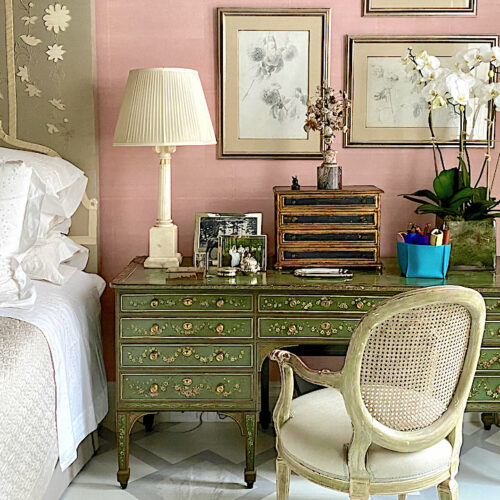
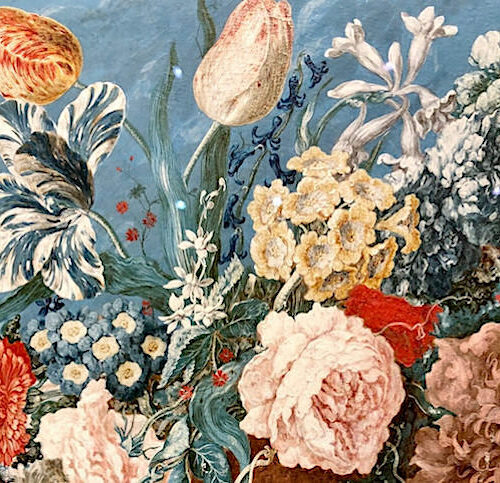
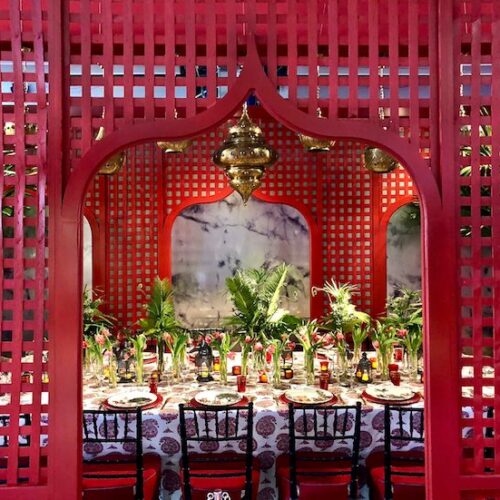
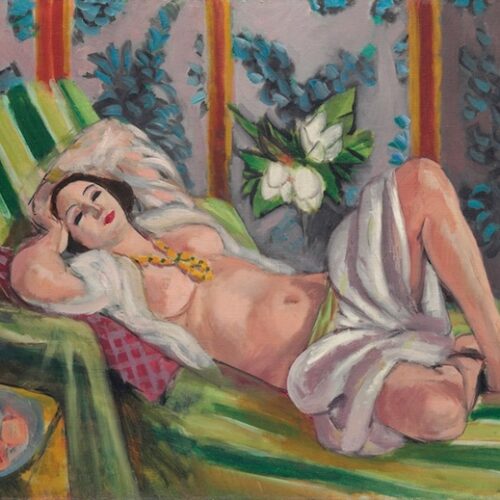

The jacket in the first image I would like to own! Thank you for this insightful overview if the exhibition. I haven’t seen and will be sure to go now.
Textiles–historic and new–are one of my passions. These Indian works of art are calling me to New York. I love that paintings of the 17th and 18th c. are included as reference points.
Thank you.
Mary
The time and talent are….incredible. I’d better check the VAMOOSE bus schedule for NY. franki
Wonderful – Thanks for sharing – After New York, do you know where the exhibition will be shown ? Congratulations for making this happen – Warm regards from Helsinki ! Isabel B.
Incredible works, what a great tour!!